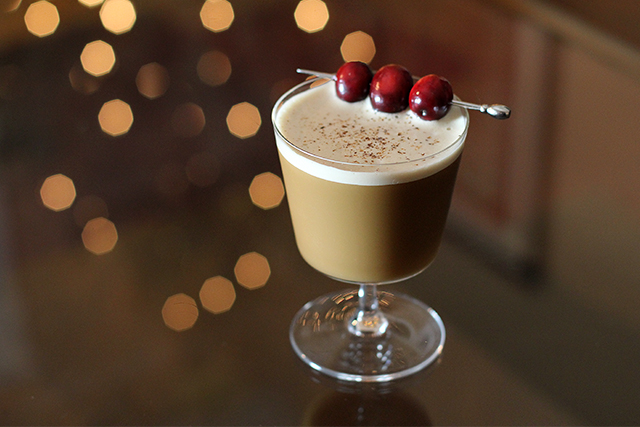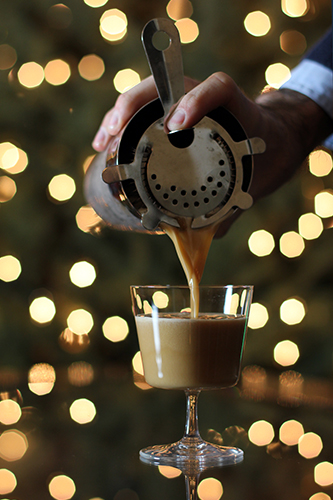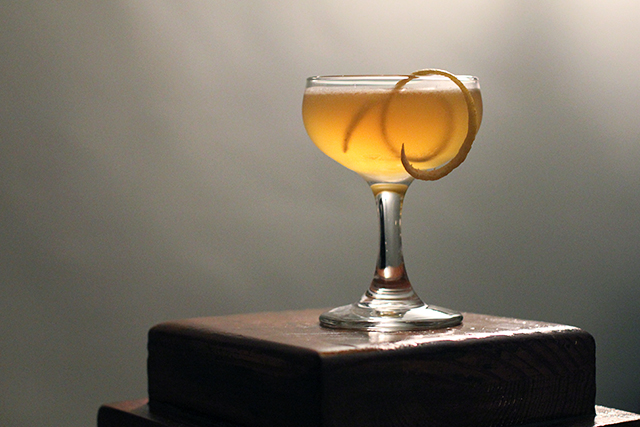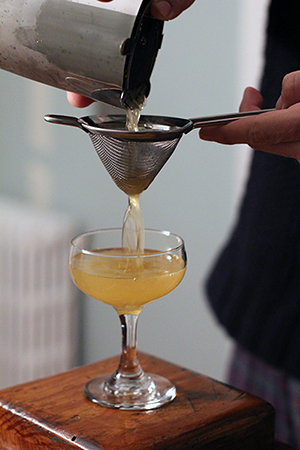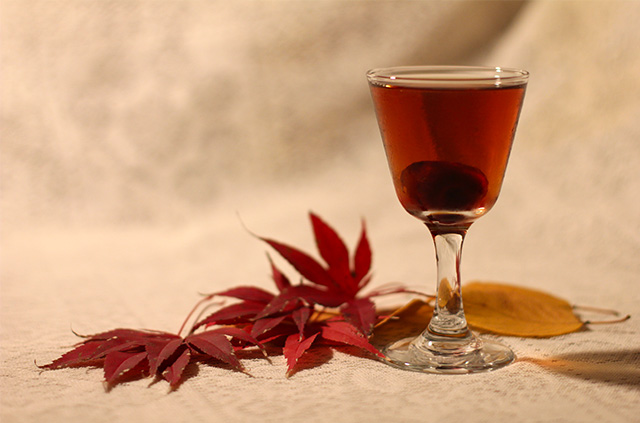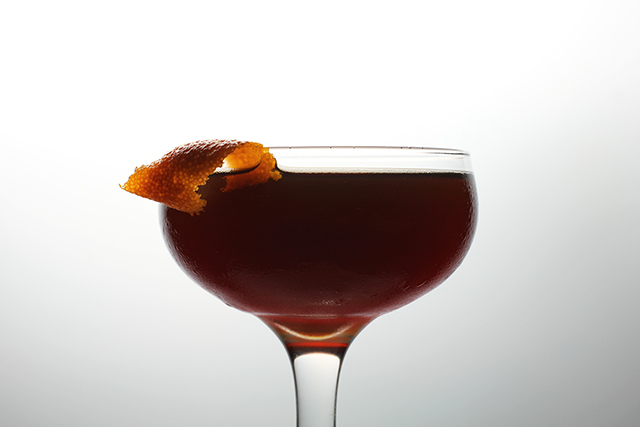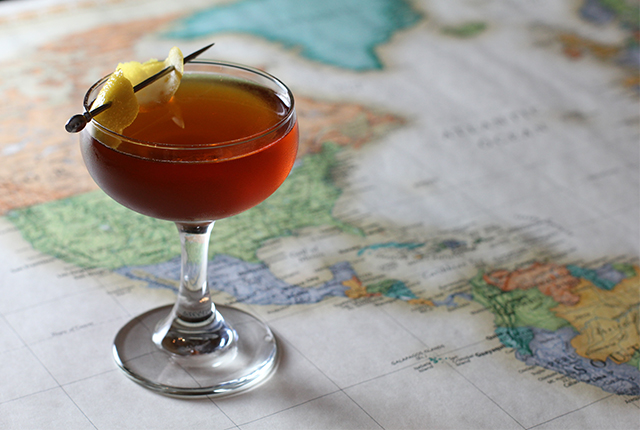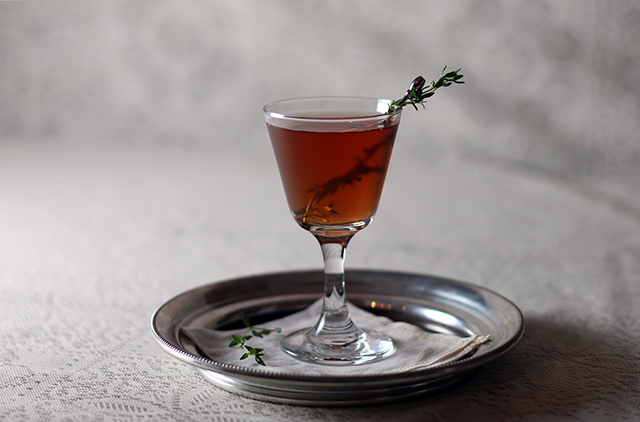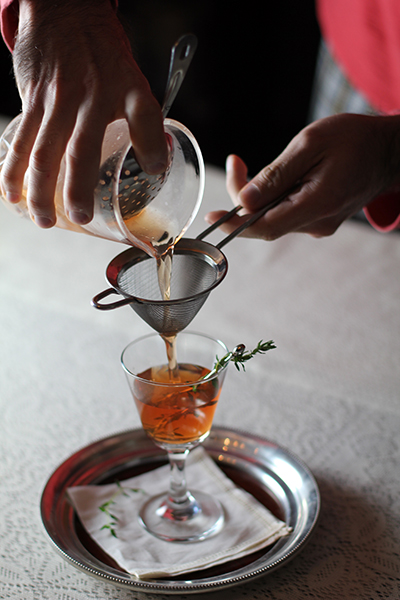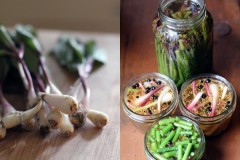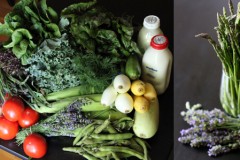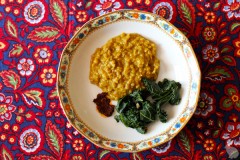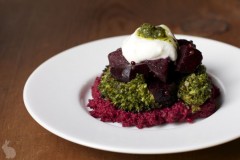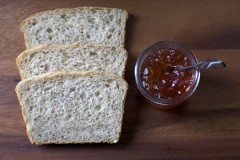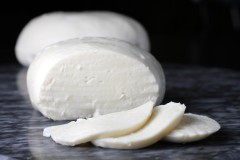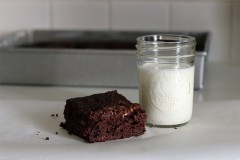Crafting original cocktails—for me, at least—is a process that calls for one part imagination and at least five parts experimentation. While Version 1.0 of any given recipe rarely passes muster, it opens doors to any number of paths leading to the final destination. Sometimes the solution is simple, though most often it requires a good bit of refinement. Around here, recently, it’s been more of the latter. In order to dial in the spec for The Cylburn, we hosted a tasting party that featured sundry variations on the theme; while in the case of my Suze-infused White Negroni I almost scrubbed the whole project after exhaustive attempts to tweak it to perfection didn’t seem to get me any closer to my desired result. However, every so often lightning strikes and a first draft is deemed of superior quality, being instantly advanced to final draft status without having to undergo any editing or further scrutinization. Call it the product of accrued mixological experience or call it a fluke, but such was the case with The French Intervention, a cocktail whose name even came easily.
A confluence of two things sparked the idea for this drink. First, there was tequila. In an unfortunate case of guilt by association, tequila often gets a bad rap as a liquor to be consumed in one gulp, in mass quantities, and with a side of salt and lime. Yet, it seemed to me that its earthy flavor profile might make it an excellent, not to mention unexpected, candidate as the base spirit in a fall cocktail. And having just picked up a bottle of El Espolòn, I was eager to test my hypothesis. The second was something I happened upon while wandering the aisles of a local wine and spirits shop—a postcard advertising the Can-Can Classic Cocktail Competition, a challenge to create a new drink using the French St-Germain elderflower liqueur. I accepted the challenge, dreamt up the recipe you see below, and was surprised that my maiden voyage produced such an interesting and balanced result—a cocktail I truly believed coulda been a contender.
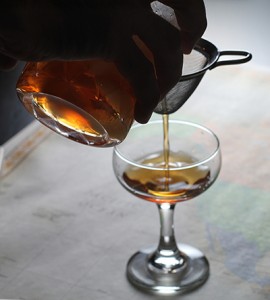
Well, it turns out the drink actually couldn’t have been a contender, as close inspection of the fine print revealed that submitted cocktails need contain 1 oz. of St-Germain. My scant 1/2 oz. just wasn’t going to cut it. (Queue sad trombone sound.) But, to me, the drink was definitely a winner and rather than mess with success for a chance at a $10,000 cash prize—who needs that anyway, right?—I was content to simply add it to Wonderland Kitchen’s fall cocktail menu.
A word on the name. The French Intervention refers to Napoleon III of France’s invasion of Mexico in 1861—a campaign meant to give President Benito Juárez a collective piece of Britain, Spain, and France’s mind after the former decided to stop sending interest payments to the three nations, who so happened to be Mexico’s major creditors. But it wasn’t just a debt-collecting mission for Napoleon III—Britain and Spain actually backed out when they found out there was an actual invasion planned—there was also a little something about financing his empire with the Mexican silver that was just laying around waiting to be mined, as well as keeping the burgeoning power of the United States in check while it was somewhat preoccupied with its own Civil War. Sneaky guy.
As a coda, while double checking to see that The French Invention had not already been ascribed to an alcoholic concoction, I serendipitously discovered that the drink’s spec tips its hat to Harry Craddock’s Napoleon cocktail. Granted, not the same Napoleon, but close enough for jazz.
The French Intervention
2 oz. El Espolòn Tequila Blanco
1/2 oz. Cynar
1/2 oz. St-Germain Elderflower Liqueur
2 dashes Angostura Bitters
Wide lemon twist for garnish
Combine the tequila, Cynar, St-Germain, and bitters in a mixing glass. Stir with ice and strain into a chilled coupe. Twist the lemon peel over the drink to express the oils and garnish.

